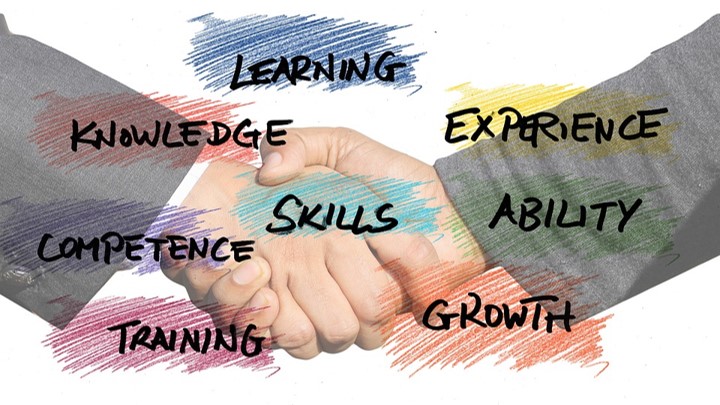Last Updated on April 22, 2023 by Uncle Pat Ugwu
In this blog, we will explore various ways to enhance your ability to continually acquire new knowledge and skills, and apply and integrate that learning into your understanding of the world. This type of ongoing, adaptable learning, called dynamic learning, is essential in today’s rapidly changing world to remain current and relevant in your career, adapt to new situations and challenges, and grow as an individual.
We will examine techniques and strategies for boosting dynamic learning, provide examples of its practical application, address any challenges that may arise, and offer tips for overcoming them. If you are interested in maximizing your potential and staying ahead, join us as we explore the realm of dynamic learning.
Techniques for Boosting Dynamic Learning
1. Regular review and practice
One of the key ways to reinforce your learning and retain information is through regular review and practice. This could involve creating flashcards to quiz yourself, rereading material, or even just discussing what you’ve learned with others. By regularly revisiting the information you’ve learned, you can help cement it in your memory and make it easier to recall later on.
This technique is particularly useful for concepts that are more difficult to understand or remember. Regular review and practice can also help identify any gaps in your knowledge and allow you to focus on those areas in more detail.
2. Collaborative learning
Collaborative learning involves working with others to learn and understand new concepts. This could be through group discussions, teamwork, or even just talking through ideas with a study partner. Collaborative learning can be especially helpful when it comes to tackling complex or abstract concepts, as it allows you to bounce ideas off of others and gain multiple perspectives.
3. Incorporating new technologies
Technology has opened up a whole world of new learning opportunities, from online courses and tutorials to virtual reality experiences. Embracing new technologies can help you access a wide range of learning resources and keep your learning dynamic and interactive.
Whether it’s through video lectures, interactive simulations, or virtual field trips, there are many ways to incorporate technology into your learning routine to keep things interesting and engaging. Utilizing new technologies can also help you stay current with the latest developments in your field and stay competitive in the job market.
4. Setting goals and tracking progress
Setting specific, achievable goals for your learning can help keep you motivated and on track. It’s also important to regularly assess your progress and identify areas where you may need to focus more effort. This can help you stay focused and make the most of your learning time.
Whether it’s setting a goal to complete a certain number of chapters per week or to achieve a certain score on a test, having a clear objective in mind can help you stay motivated and on track. Tracking your progress can also help you see how far you have come and provide a sense of accomplishment.
5. Seeking feedback and guidance
Obtaining feedback and guidance from others can greatly benefit your learning journey. These individuals could be tutors, mentors, friends, or colleagues who possess expertise in the subject you are studying. Their constructive feedback can help identify areas for improvement and confirm that you are progressing in the right direction.
Gathering feedback through individual or group sessions can enhance your dynamic learning and provide alternative viewpoints and valuable insights.
Examples of How Dynamic Learning Can Help
Seeing dynamic learning in action can be a great way to inspire and motivate you to implement these strategies in your own learning. Here are some real-life examples of individuals and organizations who have successfully boosted their dynamic learning:
A. Case studies of individuals who have successfully boosted their dynamic learning
- A college student who took on a variety of internships and part-time jobs in different fields to get a well-rounded education and build a diverse problem solving skill set.
- A software engineer who regularly attends industry conferences and workshops to stay up-to-date on new technologies and best practices.
- A high school teacher who incorporates project-based learning and collaborative problem-solving activities into their lessons to engage students and encourage critical thinking.
B. Examples of organizations that have implemented dynamic learning strategies
- A large corporation that offers ongoing training and professional development opportunities for its employees to keep them up-to-date on new technologies and industry trends.
- A small business that encourages its team members to take on side projects and explore new areas of interest to foster creativity and innovation.
- A non-profit organization that uses action learning, where team members work on real-world problems and projects, as a way to develop skills and generate new ideas.
These are just a few examples of how dynamic learning can be put into action in both personal and professional settings. By seeking out new experiences, staying current with new technologies and trends, and continuously seeking out opportunities for growth and development, individuals and organizations can boost their dynamic learning and stay ahead of the curve.
Challenges and Obstacles to Dynamic Learning
While dynamic learning can bring many benefits, there are also challenges and obstacles that can arise along the way. Here are some common barriers to dynamic learning and how to overcome them:
1. Lack of time
One of the most common challenges to dynamic learning is finding the time to fit it into your schedule. With so many demands on our time, it can be hard to carve out space for learning and development. One way to overcome this barrier is to prioritize learning and make it a regular part of your routine. This could involve setting aside a certain amount of time each week for learning or fitting it into your daily schedule in small increments.
2. Limited resources
Another challenge to dynamic learning is access to resources and materials. Whether it’s a lack of access to educational materials or simply not knowing where to find information, it can be hard to learn when you don’t have the necessary resources. To overcome this barrier, it’s important to be proactive in seeking out resources materials, and to be open to exploring different learning channels, such as online courses or educational podcasts.
3. Maintaining motivation
Lastly, maintaining motivation and self-discipline is crucial for effective dynamic learning. If you struggle with these habits, consider setting clear learning goals and finding ways to hold yourself accountable. This could include setting specific goals or finding a study partner. Identifying your motivations for learning can also help you stay motivated and on track.
Final Thoughts
Dynamic learning is a valuable tool for personal and professional growth and development. By continuously seeking out new knowledge and experiences and applying them to your understanding of the world, you can stay current and adaptable in an ever-changing world.
By implementing dynamic learning techniques and maintaining a dynamic learning mindset, you can overcome challenges and obstacles and achieve your goals. Take control of your learning journey and start boosting your dynamic learning today! Please join us on social media platforms @UnclePatech.







